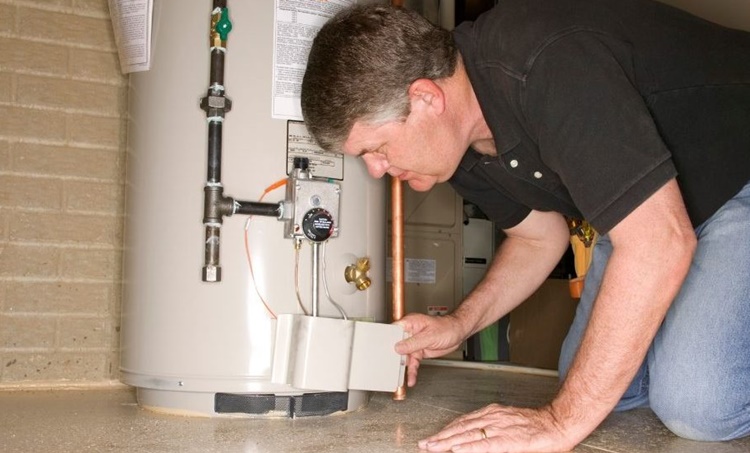In this article on the next paragraphs you can locate a bunch of sensible guidance when it comes to Tips For Maintaining Your Hot Water Heater.

Warm water is crucial for day-to-day comfort, whether it's for a refreshing shower or cleaning dishes. To ensure your hot water system runs efficiently and lasts much longer, routine upkeep is crucial. This short article offers functional ideas and understandings on exactly how to preserve your home's hot water system to avoid interruptions and costly repairs.
Introduction
Maintaining your home's hot water system might seem daunting, yet with a couple of simple steps, you can guarantee it runs smoothly for years ahead. This overview covers whatever from recognizing your warm water system to DIY upkeep ideas and understanding when to call in specialist help.
Relevance of Maintaining Your Hot Water System
Routine maintenance not only extends the life expectancy of your warm water system however also ensures it runs successfully. Ignoring maintenance can result in decreased performance, greater power bills, and even early failure of the system.
Indications Your Warm Water System Needs Upkeep
Recognizing when your hot water system requires attention can stop major problems. Keep an eye out for signs such as irregular water temperature level, weird noises from the heating unit, or corroded water.
Understanding Your Hot Water System
Prior to diving right into upkeep jobs, it's useful to comprehend the fundamental elements of your warm water system. Typically, this consists of the hot water heater itself, pipes, anode rods, and temperature controls.
Regular Monthly Upkeep Tasks
Routine month-to-month checks can aid capture small concerns before they escalate.
Purging the Hot Water Heater
Purging your water heater eliminates debris build-up, boosting efficiency and extending its life.
Monitoring and Changing Anode Rods
Anode poles prevent rust inside the container. Evaluating and changing them when worn out is important.
Evaluating and Adjusting Temperature Setups
Readjusting the temperature setups ensures ideal efficiency and safety and security.
DIY Tips for Maintenance
You can execute several maintenance jobs on your own to maintain your warm water system in leading problem.
Looking for Leakages
Regularly inspect pipes and connections for leaks, as these can lead to water damage and greater costs.
Testing Pressure Relief Valves
Checking the stress relief valve ensures it operates appropriately and stops extreme pressure accumulation.
Protecting Pipes
Protecting hot water pipes decreases warm loss and can conserve power.
When to Call a Specialist
While do it yourself upkeep is beneficial, some issues require professional knowledge.
Complicated Problems Calling For Specialist Aid
Instances consist of significant leakages, electric issues, or if your hot water heater is continually underperforming.
Regular Specialist Upkeep Conveniences
Specialist maintenance can include complete evaluations, tune-ups, and guaranteeing compliance with safety standards.
Conclusion
Regular maintenance of your home's hot water system is important for efficiency, durability, and cost savings. By complying with these suggestions and knowing when to look for expert help, you can ensure a trusted supply of warm water without unforeseen disruptions.
How to Maintain an Instant Hot Water Heater
Before tinkering with your hot water heater, make sure that it’s not powered on. You also have to turn off the main circuit breaker and shut off the main gas line to prevent accidents. Also turn off the water valves connected to your unit to prevent water from flowing into and out of the appliance. 2. When you’re done, you have to detach the purge valves’ caps. These look like the letter “T†and are situated on either side of the water valves. Doing so will release any pressure that has accumulated inside the valves while at the same time avoid hot water from shooting out and burning your skin. 3. When the purge valves’ caps are removed, you have to connect your hosing lines to the valves. Your unit should have come with three hoses but if it didn’t, you can purchase these things from any hardware or home repair shops. You can also get them from retail stores that sell water heating systems. Read the user’s manual and follow it to complete this task properly. When the hosing lines are connected, open the purge port’s valves. 4. You should never use harsh chemical cleaners or solutions when cleaning your unit. Make use of white vinegar instead. It should be undiluted and you’ll probably use about 2 gallons. 5. Now flush your water heater. This task should probably take about 40 minutes. We can’t give you specific directions for this because the procedure is carried out depending on the type, model and brand of your heater. With that being said, refer to the user’s manual. 6. When you’re done draining the unit, you have to turn off the purge port valves again. Remove the hosing lines that you earlier installed on each of the water valves. Put the valve caps (purge port) back in their respective places and be very careful so as not to damage the rubber discs that are found inside these caps. 7. Now that everything’s back in place, check your user’s manual again to find out how to reactivate your water heating system. 8. Once it is working, turn one of your hot water faucets on just to let air pass through the heater’s water supply pipes. Leave the tap on until water flows smoothly out of it. https://www.orrplumbing.com/blog/2014/september/how-to-maintain-an-instant-hot-water-heater/

I have been very occupied with Tips on Maintaining a Water Heater and I am praying you liked my post. Sharing is nice. Helping others is fun. We truly appreciate your readership.
Call Today